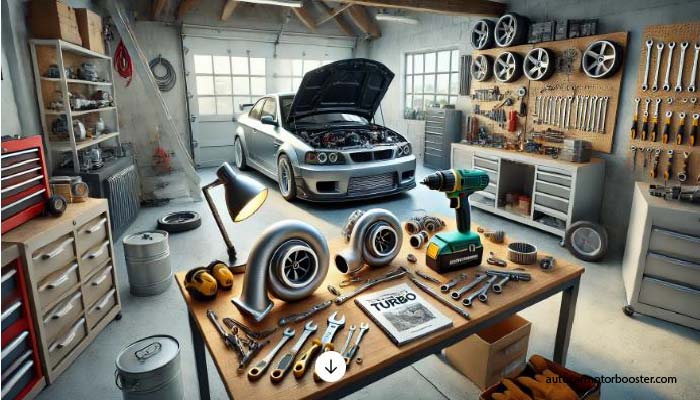Turbocharging is an effective way to boost a vehicle’s horsepower and improve performance. However, installing a turbocharger on your own requires attention to detail and safety. If not done correctly, turbo installation can lead to costly mistakes or even dangerous outcomes. Here are key safety tips for a successful and secure DIY turbo installation.
1. Gather the Right Tools and Equipment
Before beginning the installation, ensure you have all the necessary tools and equipment. You’ll typically need wrenches, a drill, turbo mounting brackets, bolts, and gaskets. Using high-quality tools is essential to avoid mishaps during installation. Additionally, keep safety gear like gloves, goggles, and a fire extinguisher nearby.
2. Thoroughly Read the Turbo Installation Manual
Every turbo kit comes with a manual. This manual includes important information on parts, installation steps, and safety warnings. Read it carefully to understand specific instructions for your vehicle model. Follow the manufacturer’s guidelines as closely as possible to prevent errors.
3. Ensure Proper Ventilation in Your Workspace
Turbo installation involves working with fuels and various chemicals. Make sure your workspace is well-ventilated to avoid inhaling toxic fumes. If working in a garage, open the doors and windows to improve airflow. Poor ventilation can lead to health hazards, such as dizziness and respiratory issues.
4. Prepare Your Vehicle Thoroughly
Before installing the turbo, inspect your vehicle’s engine and other related components. Check for any leaks, cracks, or issues that could complicate the turbo installation. Replace worn-out parts as needed. A well-prepared engine will ensure the turbocharger works optimally and minimizes the risk of damage.
5. Handle Oil and Coolant Carefully
During the installation, you’ll need to work with oil lines and coolant. Properly handling these fluids is essential to avoid spills, fires, or component damage. Make sure the engine is cool before starting to avoid burns. Use the recommended turbo oil to keep the turbo system well-lubricated.
6. Secure All Connections and Components
Loose connections are one of the most common issues in DIY turbo installations. Carefully secure all bolts, nuts, and clamps as specified in the manual. A loose component could lead to boost leaks or even damage the turbocharger. Double-check each connection after installation to ensure everything is tightly fitted.
7. Test the Turbocharger After Installation
Once the turbo installation is complete, start the vehicle and observe its performance. Listen for any unusual sounds, like hissing or rattling, which could indicate a leak or loose connection. Drive the car at low speeds initially and monitor temperature and boost levels. This testing phase is crucial to ensure that everything functions correctly.
FAQs on Turbo Installation Safety
1. What are the main safety hazards in DIY turbo installations?
The main hazards include poor ventilation, improper handling of oil and coolant, and loose connections that can cause boost leaks or engine damage.
2. Is it necessary to have a well-ventilated workspace for turbo installation?
Yes, proper ventilation is crucial to prevent exposure to harmful fumes and ensure a safe working environment.
3. Can I use any type of oil for my turbocharger?
No, using the recommended turbo oil is essential to prevent damage and ensure the turbo system functions efficiently.
4. How do I know if my turbo installation is successful?
After installation, test your vehicle for any unusual sounds, check for leaks, and monitor performance indicators like boost levels and temperature.
5. Why is it important to follow the turbo installation manual?
The manual provides specific guidelines for your vehicle model, helping you avoid mistakes and ensuring a safe and successful installation.
If Like This Article Visit Our Website. Collect From Wekiapedia
